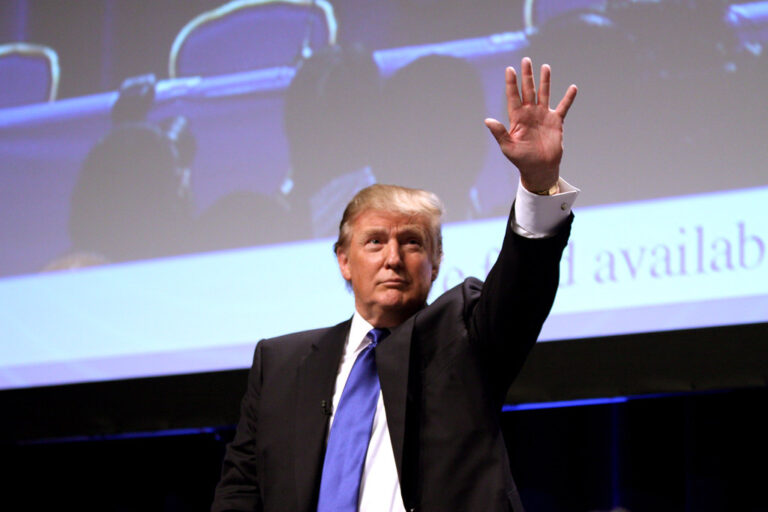Key Takeaways
– Representative Derrick Van Orden rejects the idea that Republicans always follow the president’s wishes
– He says House Republicans are not “little b——” who just obey orders
– The House debates a major spending and tax bill that extends corporate cuts and trims Medicaid and food aid
– Hardline conservatives and a Kentucky Republican oppose the bill over its effect on the national debt
– The bill passed the Senate but still needs approval in the House before it reaches the president’s desk
Introduction
Representative Derrick Van Orden spoke out strongly against the notion that Republicans in the House always do what the president wants. He made his point clear on a busy Wednesday in Congress. Lawmakers continue to discuss a sweeping budget and tax package that could reshape government spending. In this article, we explain why this debate matters and what comes next.
The Big Budget Debate
At the center of the talk is a package often called the One Big Beautiful Bill Act. This plan blends tax breaks for businesses with cuts to public programs. It extends lower rates for companies while cutting funding for healthcare and food aid. The Senate already approved this version. Now the House must vote. If members agree, it will go to the president for his signature.
However, the plan faces serious pushback at every step. Some Republicans say it will raise the national debt by more than three trillion dollars in ten years. Others say it does not go far enough in slashing spending. As a result, House leaders struggle to muster the votes needed.
Pressure from the White House
In recent days, the White House has urged House Republicans to get in line. The president wants a quick vote to secure the cuts and tax breaks. Some allies in the House have warned of consequences for any who refuse. A sense of urgency hangs in the air.
Nevertheless, Representative Van Orden pushed back. He told reporters that members of Congress have their own priorities. He insisted they answer to voters, not just to the White House. His blunt language grabbed headlines and set the tone for the day.
Van Orden’s Defiant Message
“I represent almost eight hundred thousand people in my district,” he said. Then he added that no one told him to support or oppose the bill. He made it clear he will not accept orders from the president. He also pointed out that he respects the Senate for completing its work on the bill.
By speaking out, he showed that not all Republicans are united behind the president’s plan. He also reminded his colleagues that they each have a voice. This rare public rejection of party pressure struck a chord in Washington.
Hardline Opposition Emerges
Meanwhile, a group known as the House Freedom Caucus opposes the bill. This bloc of hardline conservatives wants deeper cuts and less spending overall. They argue that running up the national debt threatens the nation’s future.
These members say the Senate version does not meet their standards. They also say the plan includes too many items unrelated to taxes and spending. Consequently, they vow to vote no if it comes up in its current form.
Rep. Thomas Massie’s Stand
Another Republican, Thomas Massie from Kentucky, also opposes the bill. He is not in the House Freedom Caucus. Yet he has strong views on the debt issue. He believes the bill will cost too much over time.
On the same Wednesday, Massie said he secured commitments from ten colleagues to vote against the plan. He said they intend to stand firm no matter what pressure they face. This reveal showed that the opposition is not limited to one group.
The Impact on Americans
If the bill becomes law, businesses will keep enjoying lower tax rates. Supporters say this will help the economy grow and create jobs. Yet critics worry that the extra debt will force painful cuts later. They fear programs for the poor and elderly could face steep reductions.
For families who use Medicaid or food assistance, the cuts could mean tougher choices. Medical bills might get harder to pay. Some children could face hunger or food insecurity. These concerns drive many critics to fight the package.
Republican Unity at Stake
Party leaders face a tough choice. They want to pass the bill to claim a big win on tax and spending policy. They also want to avoid public fights that could shape voters’ views in the next election.
However, forcing members to fall in line could backfire. Some lawmakers might vote against the leadership if they feel bullied. Others may break ranks to protect their districts. As a result, passing the bill could cost more votes than it gains.
What Happens Next
The House will hold more debates and votes in the coming days. Leaders will try to win over skeptical members. They may offer changes or side deals. Yet any shift could anger other factions.
If the bill fails, Republicans may have to rewrite it. They could strip out controversial items or scale back cuts. Alternatively, they could break the package into smaller bills. This strategy could help win votes on each part separately.
Yet time is short. The budget deadline looms. Without an agreement, parts of the government could face shutdown risks. The stakes remain high for all sides.
Conclusion
Representative Derrick Van Orden made clear that House members answer first to their voters. His bold words remind us that party pressure can face resistance. Meanwhile, Republicans debate a sweeping plan that could reshape the nation’s budget. Hardline conservatives and debt hawks stand ready to oppose it. Leaders must now balance unity with individual conscience. The outcome will shape the country’s fiscal path and political future. Watch closely as the House works through this major bill in the days ahead.










